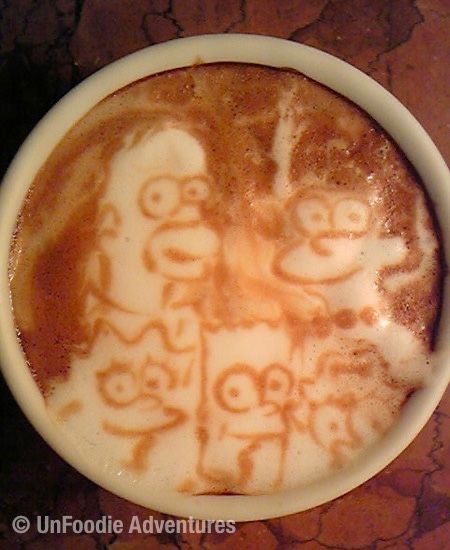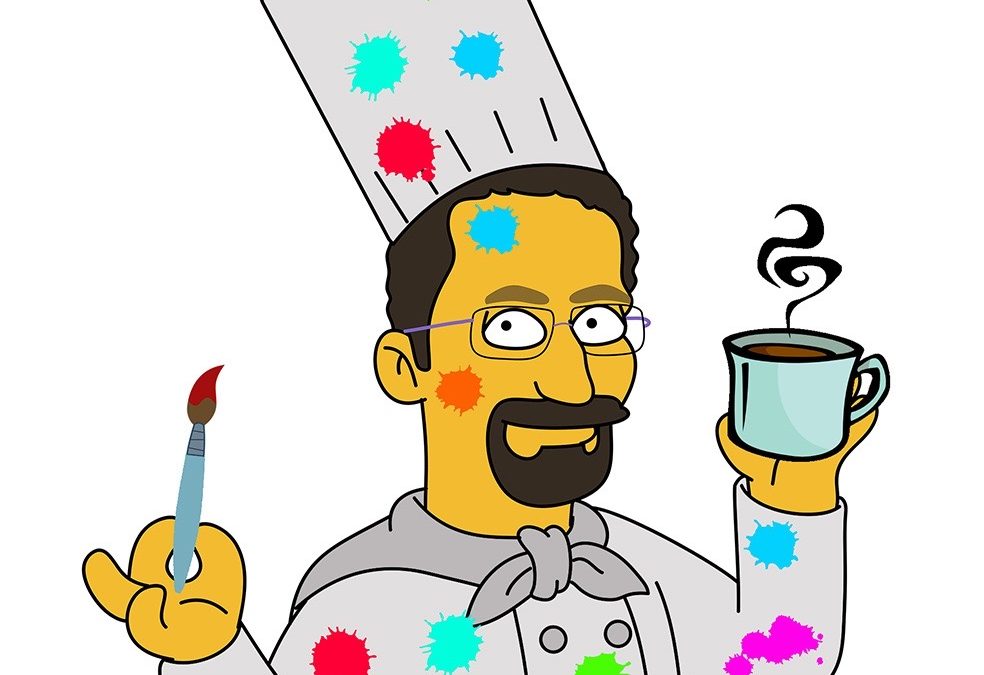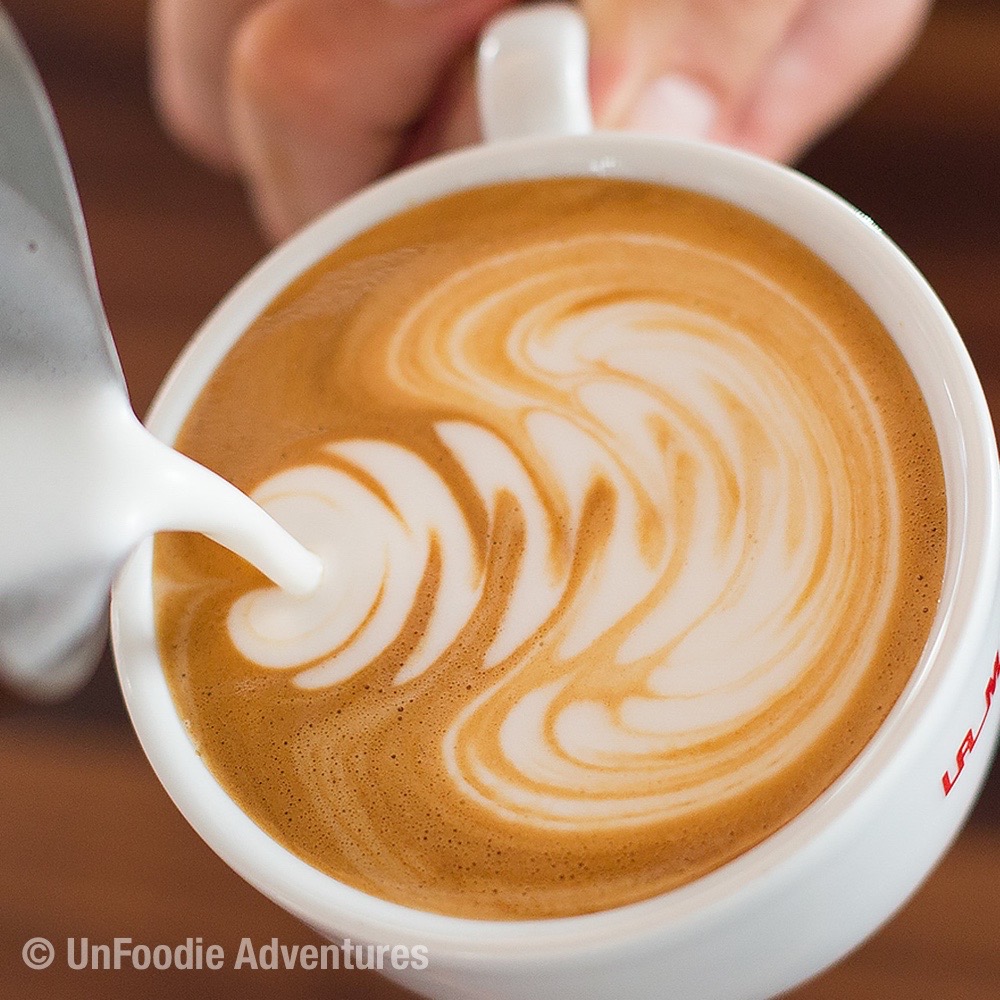The Art of Drink Art
I enjoy a good latte or cappuccino- but I also have to admit that it is even better when the hot, freshly made, creamy ambrosia is graced with a work of art on the foam. Whether it be hearts, swan or a perfect steamed-milk tulip, it is a bit of magic that elevates yummy into something so much more. On occasion, I’ve even gotten works of art that almost make me sorry to take a sip of the drink.
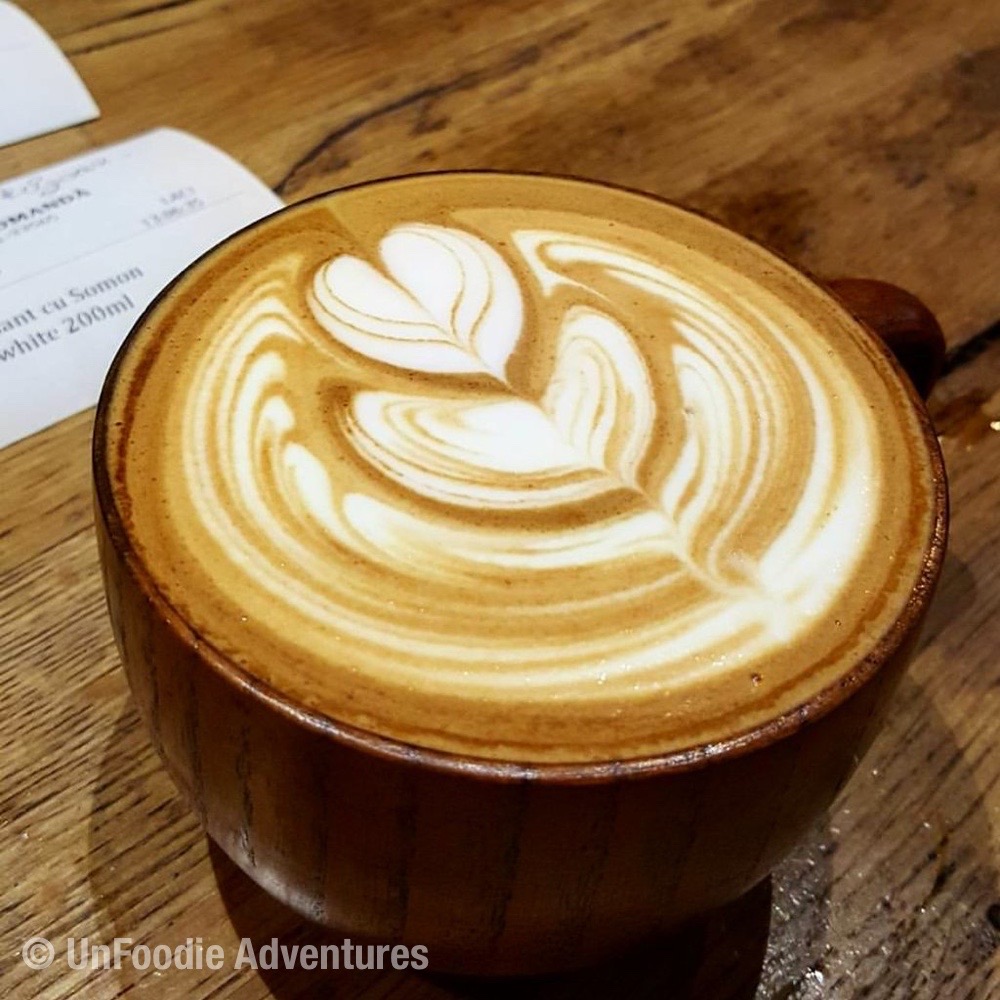
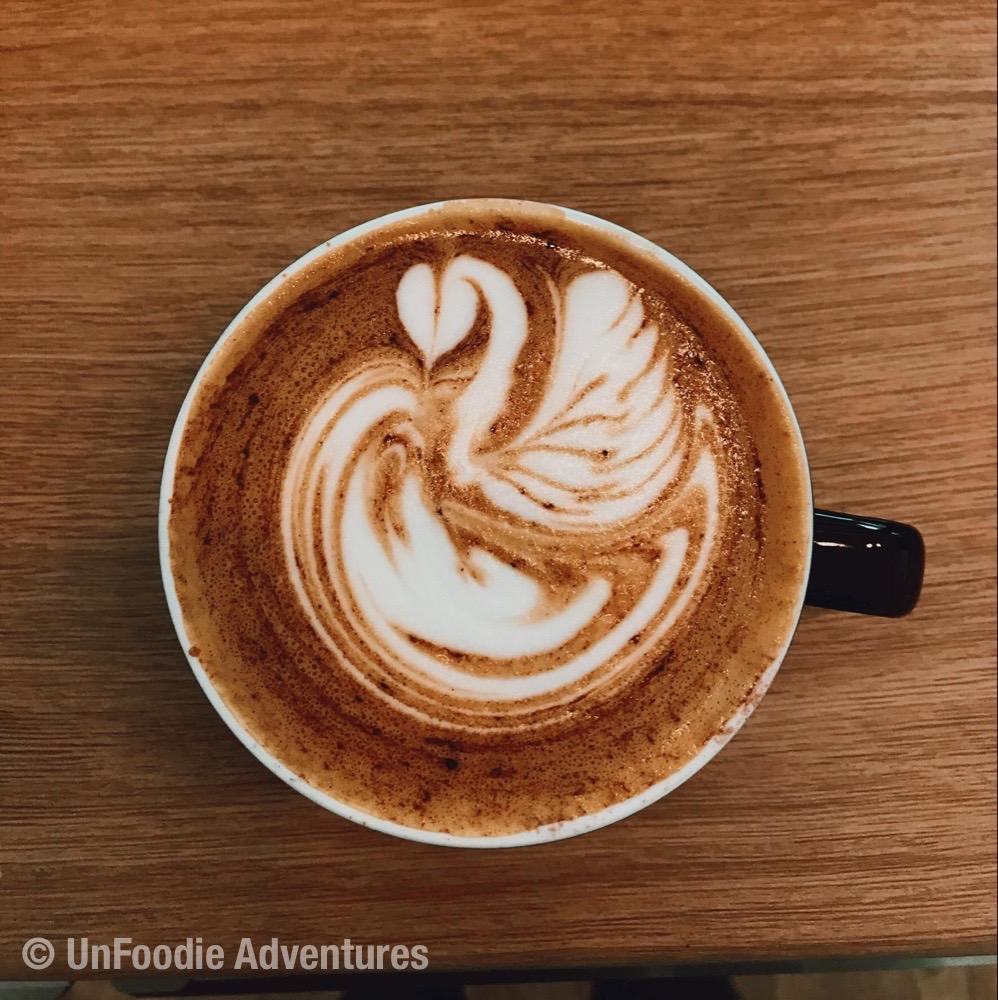
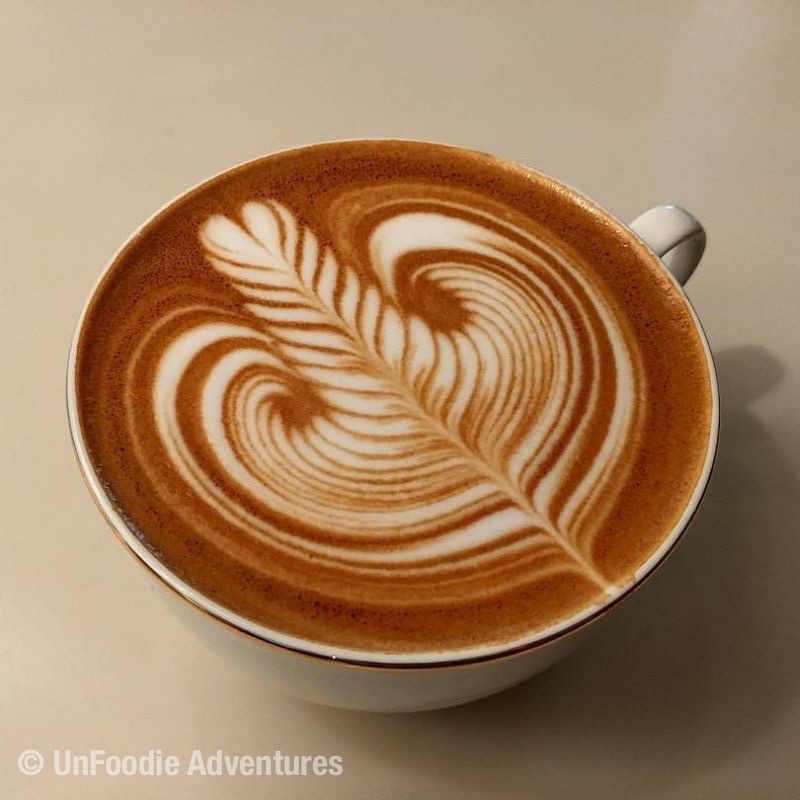
There are even international latte art competitions nowadays and the winners produce spectacular creations.
Winner of 2019 World Latte Art Battle (WLAB), Malaysian barista, Irvine Quek Siew Lhek who has won numerous other competitions across Asia in the previous couple of years.
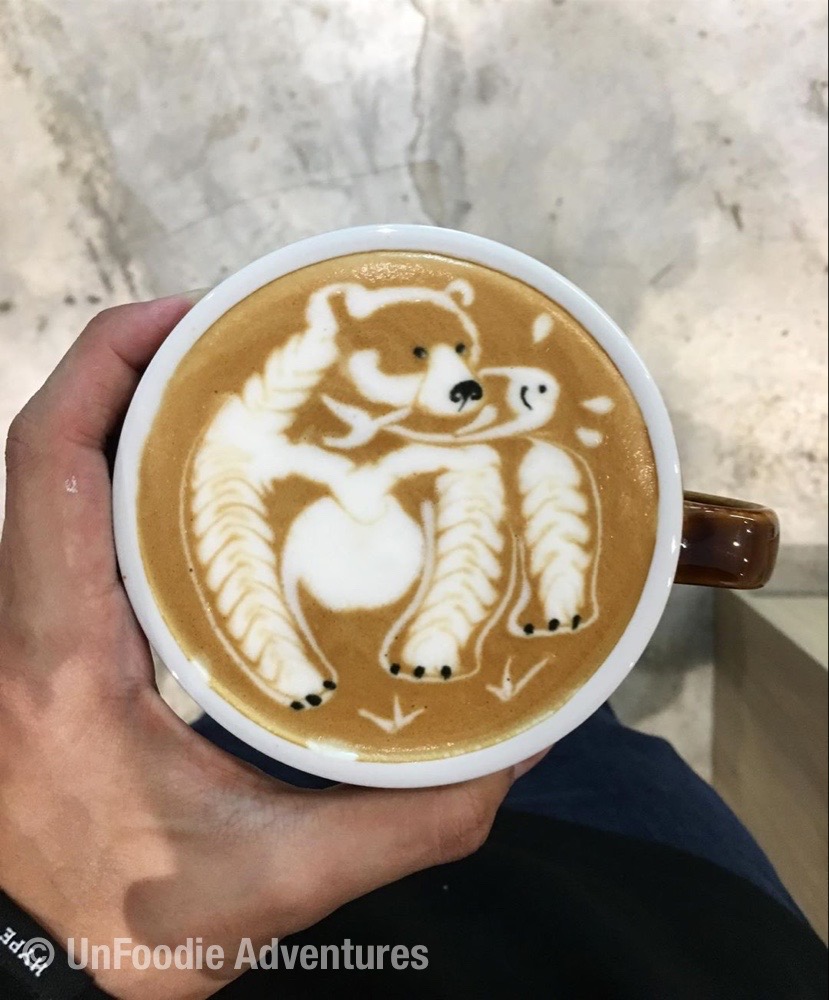
A very busy store front
This used to be the domain of creative baristas, but nowadays, you can learn how to do this from an online videos – there are even live classes offered that can teach you how to make what is commonly known as latte art. Like any other artistic endeavor, it certainly takes commitment and dedication, probably requiring daily practice. Sure, you could end up with something that looks like it belongs on the wall a museum.
But do you really need to do all of that? Not with modern technology to the rescue – enter the beverage food printer. These allow you do make crazy pieces of art or just recreate actual pieces of art on your steamed foam coffee beverage.
There are a number of these machines on the market. However, the two I have encountered are the Ripple Maker and the iView Picasso:
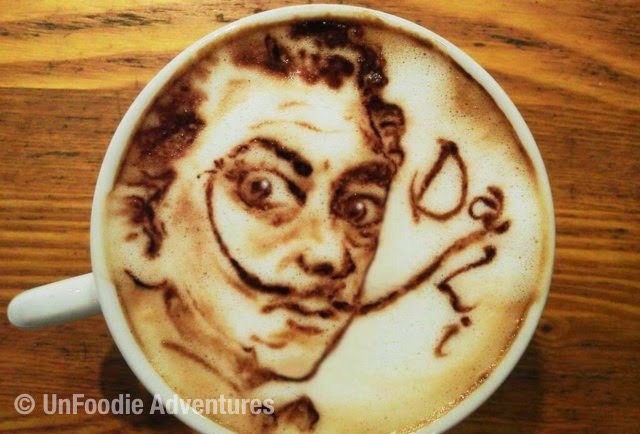
A work of art – Muesum worthy!
The Ripple Maker uses the process known as etching, using coffee extract as its ink. The patterns that are made are striking but there are those that argue that the “ink” can negatively impact the taste of your beverage. That may be true if you have a particularly refined palate AND are using a high quality coffee. Why drink anything else you say? Well, I’m all for that, but most cafes don’t brew such high quality coffee anyway and even at home, we only have the fancy-shmancy beans when we’ve just come back from a trip to a coffee haven (ie Costa Rica, any where in France or Italy, and Vienna). Enough of this coffee snobbery!
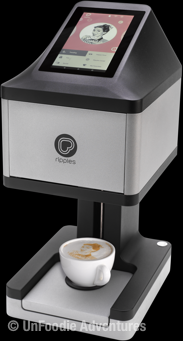
Using special cartridges filled with a natural coffee extract, the Ripple is able to reproduce incredibly detailed images on steamed foamy milk using techniques borrowed from both 3D and inkjet printers. It takes less than 10 seconds to do its thing with uncanny accuracy given the medium isn’t a stable solid surface. Customers can use a mobile app to direct the printer, requesting anything from text messages with custom fonts, to cartoon images or even high-res photos they have on their smartphone – making it the ultimate personalized coffee beverage.
The iView Picasso is a multipurpose, food-safe printer that can be used to decorate not just the tops of espresso beverages, but so much more including beers, yogurt, milk tea, cookies, and cakes. It is also meant for industrial scale operations – not just one offs. The one I saw in operation was servicing a 25000 attendee conference and was in operation non-stop for 14 hours a day probably making over 2000 images in that time. It uses an edible ink cartridge that can print any one of a number of single color inks. So you can get the brown coffee color, but beware, it won’t have a lick of coffee in it. The idea is that if it is colorless, it can’t impact the flavor of the underlying food item and you can use the same ink for lattes, cakes or anything else – but, to me, it seems a bit heretical to use non-coffee based products to generate the image (I’ll admit it is a bit weird what I’m being a purist about in this particular instance).
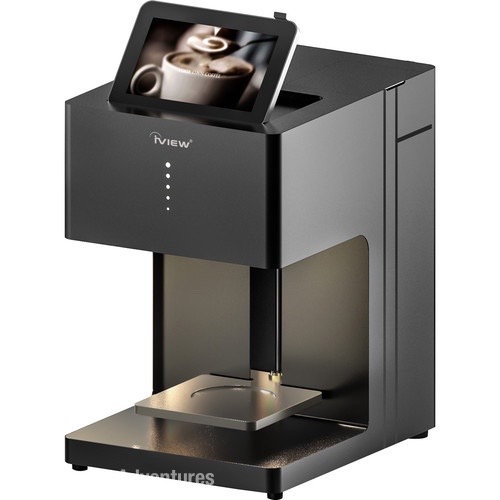
So what do you end up with? Well, at the conference that I just mentioned, I stood in line for 15 minutes to get a personalized beverage – all for your benefit! There were about 50 people in line in front of me who were served in the intervening 15 minutes, attesting to the high-throughput capacity of this machine. The barista would make a cappuccino or latte and an assistant would snap a photo of the victim on an iPhone. With just a press of a couple of buttons the image was transmitted to the printer. The “blank canvas” beverage which was on a stand would magically elevate into the business end of the machine so more magic could take place (all the while, allowing the illusion and suspense to be maintained). In about 20 seconds, the beverage would be lowered with an image on the foamy surface, much to the delighted exclamations of the victim and nearby victims-to-be.
When my turn came, I dutifully posed for the photo, flashing my best “this face is gonna be on a cappuccino “ smile – a smile that was remarkably similar to my regular smile, but I’m almost certain that most will not appreciate this fact. The assistant let me take a peak behind the curtain and I was tickled to see the printer head move back and forth along the surface of the beverage, exactly like a ink jet printer. The resulting image was quite impressive. There was an impressive amount of resolution given that the image was on a non-solid and more importantly, only partially stable surface. The trick, I was told, was to make a very firm foam – one that can almost hold a peak. No one was surprised when I, like everyone before me, took photos of my beverage.
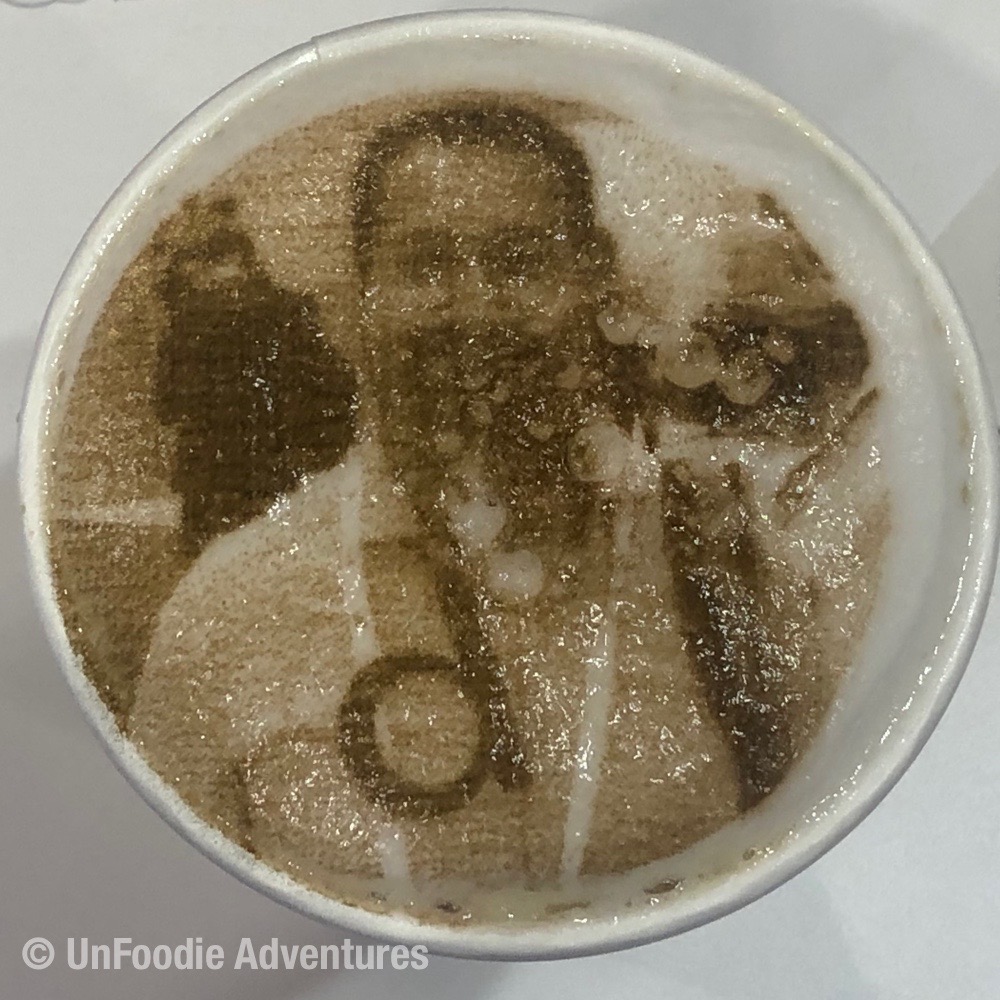
Now for the true test: taste. One sip – taste just like a standard, run-of-the-mill low-fat, cappuccino. But was there any aftertastes imparted by the ink? My palate wasn’t sensitive enough to detect any “foreign” flavors. But be a bit more definitive, I decided to do a comparative assessment. Fortunately, when the barista saw that I hade more than an academic interest in this whole affair, he let me compare tastes of the cappuccino with and without an image. And the result: as advertised, no impact of the printing process on taste at all. Others around me who were willing to share their opinions also came to the same conclusion. I’d be curious to get a professional taster’s opinion. Maybe I’ll drag my sommelier buddy along to the conference next time.
Till then though, I’m gonna save my artistic efforts for this website and not bother learning how do to latte art. While serving up a swan or tulip is a pretty cool trick, so is whipping out your iPhone and taking a picture of your guest and then 30 seconds later handing them a latte or cappuccino (or beer) with their face on it. While certainly not useful for everyday circumstances, it can make for a great conversation starter at you next party.
